
By Bob Goemans

There is a unique closeness between Clownfish and their host anemone. The anemone provides a safe haven for the Clownfish and in return the clownfish will defend its host by driving off potential predators of the anemone. A common mistake made by aquarists is mismatching the Clownfish to its host anemone. Most Clownfish will not go into any anemone. There is a certain preference for each species of Clownfish. Some will call home to more than one specie of anemone, but do prefer certain species. This selectivity is not always as strong in captivity, but clownfish are still most attracted to their natural hosts. It is also important to note that clownfish are one of the few marine fishes that are captive bred in large numbers. Captive bred clowns will have "grown up" without ever seeing an anemone, so they may be less selective and may never "bond" to an anemone at all.
Another important note is that it is not necessary to keep anemones and clownfish together. Anemones are notoriously difficult to maintain in captivity. They require bright light, feeding and outstanding water quality. Fortunately, clownfish can be kept just fine on their own since this is the best choice for most aquarists. Clownfish are an excellent fish for the beginner hobbyist. They are aggressive eaters and readily accept prepared foods.
Although there are not external differences to detect the sex, all Clownfish are sexually immature when hatched. They will develop into males and females depending on the pecking order of the school. A pair will lay eggs at the base of the anemone where they will be protected. The eggs are orange in color. Rearing in the average aquarium is nearly impossible. Proper breeder displays must be in order before breeding to ensure success.
Many Clownfish can be maintained in a 30 gallon aquarium. When kept with host anemones, tanks should be much larger, 55 gallons and up, to help provide greater environmental stability. There is more information on anemones at the end of this article. The following information will pair some of the more commonly kept clownfish with the anemones that will most likely be accepted. Anemones are listed in order of preference. In the case of the Sebae and Pink Skunk Clowns, the first two anemones listed may have equal preference.
False Percula Clown (Amphiprion ocellaris) and Percula Clown (Amphiprion percula )
A. ocellaris is the most commonly kept clownfish and is found associating with anemones throughout the Indo-Pacific. In nature they can attain a length of up to 3.2" but rarely exceed 2" in our captive systems. These two fish are very similar and are sometimes mistaken for each other. The color patterns are similar but A. percula is not as bright orange. The black outlines on white are also thinner on the Ocellaris when compared to the Percula. The Ocellaris is hardier than the Percula. Ocellaris clowns are much more common and less expensive than Perculas.
The most likely hosts for these clowns are listed below:
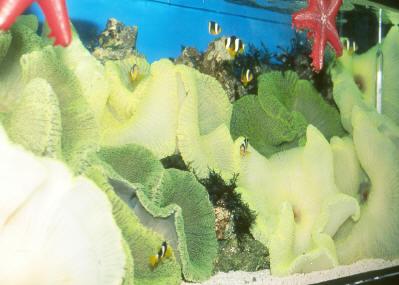
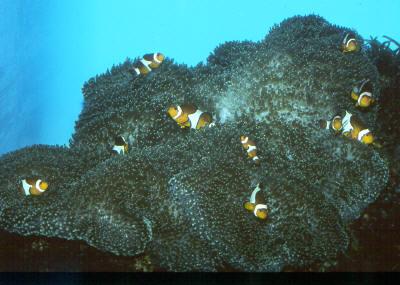
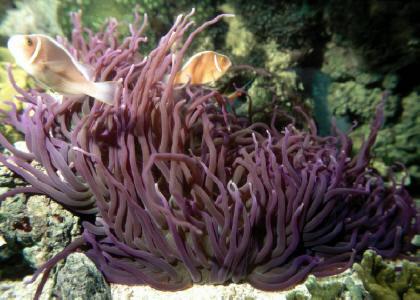
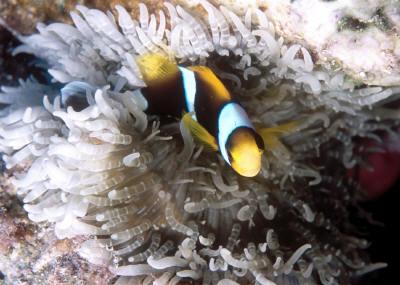
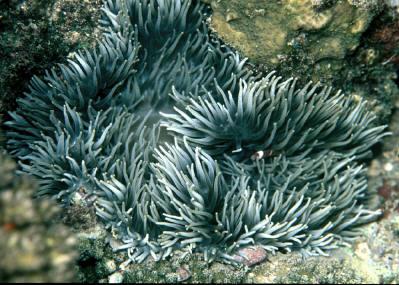
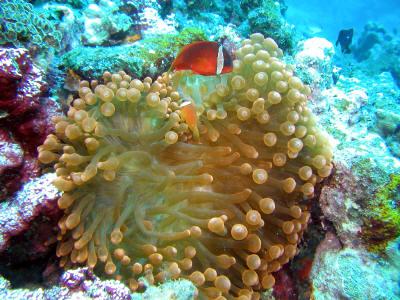
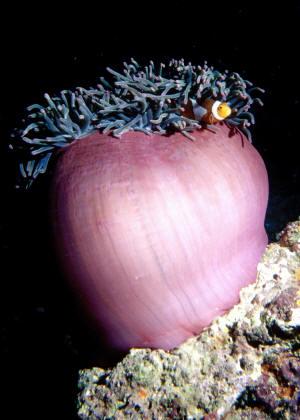
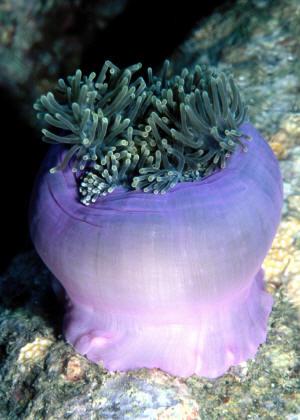
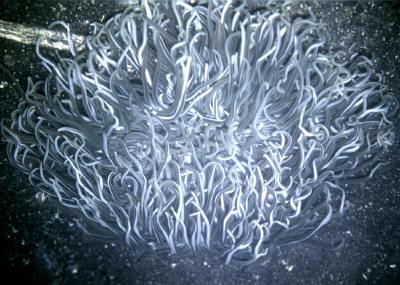
The above information is presented as a good starting point. There is no guarantee that one of the Clownfish listed will go into it's "preferred anemone", but in nature they are most often seen frequenting their preferred host anemone as listed above.
Unfortunately, most of the anemones listed are much more difficult to keep than the clownfish associated with them. To insure the best possible chance of maintaining anemones, strong currents (preferably wave maker style), six to eight watts of lighting per gallon, addition of trace elements, and with the exception of the Carpet and Saddle Anemone which should have a minimum of a 120 gallon aquarium, all others should be maintained in no less the 55 gallon tanks.
When purchasing anemones, ensure tentacles are fully inflated. Anemones with gaping mouths should not be selected. Anemones in good health, especially the larger ones will feel very sticky to the touch.
Anemones should not be fed goldfish or anything not "marine" in origin. Raw crabmeat, cod, shrimp are all accepted. One weekly feeding (small portion) will suffice as anemones as corals will produce most of their own food provided proper lighting is in place.
To ensure success in maintaining anemones, water conditions must be pristine. Weekly 10% water changes are a must using a salt mix reputable brand blended for reefkeeping. Anemones in the dying stage are notorious for fouling a tank and killing other inhabitants. It is strongly recommended that foam sleeves be put over the intakes of power heads, as eventually anemones will relocated and will inevitably find the intake of the power head and be killed. And as a rule, these moves generally take place while you are sleeping. Health checks should be made daily. More information can be found on the www.wetwebmedia.com site!
Suggested Reading:
Wilkerson, Joyce D. Clownfishes. T.F.H. Publications, 2001
Daphne G. Fautin, Gerald R. Allen Anemone Fishes and Their Host Sea Anemones : a Guide for Aquarists and Divers. Tetra Press, 1994